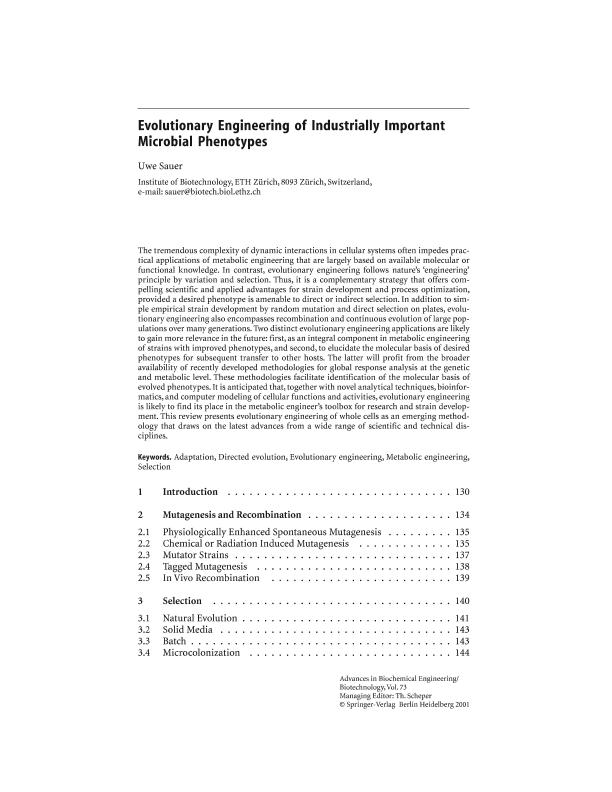Artículo
Value of the ethnomedical information for the discovery of plants with antifungal properties. A survey among seven Latin American countries
Svetaz, Laura Andrea ; Zuljan, Federico Alberto
; Zuljan, Federico Alberto ; Derita, Marcos Gabriel
; Derita, Marcos Gabriel ; Petenatti, Elisa Margarita; Tamayo, Gisellle; Cáceres, Amando; Cechinel Filho, Valdir; Gimenez, Alberto; Pinzón, Roberto; Zacchino, Susana Alicia Stella; Gupta Mahabir
; Petenatti, Elisa Margarita; Tamayo, Gisellle; Cáceres, Amando; Cechinel Filho, Valdir; Gimenez, Alberto; Pinzón, Roberto; Zacchino, Susana Alicia Stella; Gupta Mahabir
 ; Zuljan, Federico Alberto
; Zuljan, Federico Alberto ; Derita, Marcos Gabriel
; Derita, Marcos Gabriel ; Petenatti, Elisa Margarita; Tamayo, Gisellle; Cáceres, Amando; Cechinel Filho, Valdir; Gimenez, Alberto; Pinzón, Roberto; Zacchino, Susana Alicia Stella; Gupta Mahabir
; Petenatti, Elisa Margarita; Tamayo, Gisellle; Cáceres, Amando; Cechinel Filho, Valdir; Gimenez, Alberto; Pinzón, Roberto; Zacchino, Susana Alicia Stella; Gupta Mahabir
Fecha de publicación:
01/2010
Editorial:
Elsevier Ireland
Revista:
Journal of Ethnopharmacology
ISSN:
0378-8741
Idioma:
Inglés
Tipo de recurso:
Artículo publicado
Clasificación temática:
Resumen
Ethnopharmacological relevance: This study reports the antifungal evaluation of 327 plant species (92 families and 251 genera) from seven Latin American countries which were selected on the basis of their reported ethnomedical uses and compared them with plants selected at random.
Aim of the study: (a) The main aim of this study was to investigate whether the probability of detecting antifungal plants is higher when plants have reports of ethnopharmacological uses related to fungal infections (PAU group) than when they are selected at random (PNAU group). (b) The second objective was to determine, within the PAU group, whether the probability of obtaining a positive result will be higher when the plants are tested against dermatophytes, than against yeasts or Aspergillus spp. (c) The third goal was to investigate, within all MICs≤1000g/mL, if the MICs displayed by the PAU group are comparatively lower than MIC values of the PNAU group; that is to say, if they can be expected more potent antifungal plants within the group of plants that have a history of traditional use related to fungal infections than when they do not have one.
Materials and methods: A five-stage process of documentation, evaluation and analysis of results was conducted: (1) selection of words that could describe the ethnopharmacological use related to fungal infections; (2) a survey of specialized literature in each country; (3) collection and preparation of an extract of each plant; (4) antifungal evaluation of the selected plants and (5) statistical analysis of the results. For the antifungal evaluation, the microbroth dilution assay recommended by the Clinical and Laboratory Standards Institute (CLSI, formerly NCCLS) was used against a panel of eleven human opportunistic and pathogenic fungi. For the statistical analysis the Pearson?s Chi Square test and the Score?s test were used.
Results: (a) A significantly higher probability of detecting plants with antifungal activity against at least one fungus was found within the PAU (40.3%) than the PNAU group (21.3%) (p < 0.01). (b) A similar higher
probability than in (a) (39.6% vs. 20.8%) was found when plants were tested against dermatophytes (p < 0.01) but not against yeasts or Aspergillus spp. (p > 0.05). (c) Within the detected antifungal plants
from both groups, plants of the PAU group displayed higher activities (lower MICs) than those of PNAU group against dermatophytes (p < 0.05) but not against yeasts or Aspergillus spp.
Conclusions: Considering that dermatophytes are the cause of superficial fungal infections, which can be easily detected and followed by traditional healers, our findings suggest that the ethnopharmacological
approach is useful in guiding the detection of antifungal plants in Latin America mainly for infections in which the pathological expression is obvious and, therefore, the cure can be clearly observed.
Palabras clave:
Antifungal Activity
,
Ethnomedical Information
,
Latin American Plants
Archivos asociados
Licencia
Identificadores
Colecciones
Articulos(INQUINOA)
Articulos de INST.DE QUIMICA DEL NOROESTE
Articulos de INST.DE QUIMICA DEL NOROESTE
Citación
Svetaz, Laura Andrea; Zuljan, Federico Alberto; Derita, Marcos Gabriel; Petenatti, Elisa Margarita; Tamayo, Gisellle; et al.; Value of the ethnomedical information for the discovery of plants with antifungal properties. A survey among seven Latin American countries; Elsevier Ireland; Journal of Ethnopharmacology; 127; 1; 1-2010; 137-158
Compartir
Altmétricas



